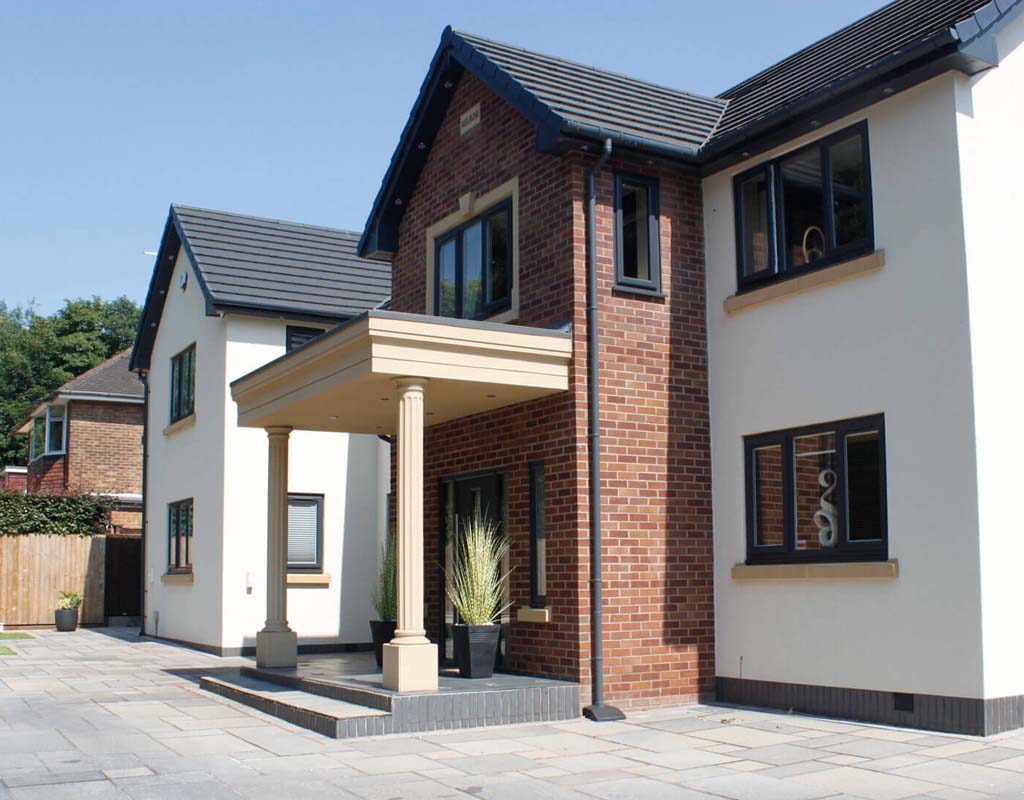Rendering refers to the application of render, which is typically applied to a building’s external façade, although rendering may sometimes be applied internally before plastering. It is similar to plastering, only applied to the outside of a building.

Below are some of the main types of render available today:
Lime Render
Lime Render contains Natural Hydraulic Lime, which is why it is often referred to as Natural Hydraulic Lime Render. Historically, this form of rendering has been used for centuries. As a result, conservation projects and listed buildings tend to use this form of rendering. In addition to being very breathable and flexible, lime render is commonly reinforced with chopped hair. It has become rare to find a specialist who can work with lime render since cement render became popular in the early 19th century.
Sand and Cement Render
Today, this is the most common type of render on buildings. Sand, cement, and water are the main ingredients in render, which is usually applied in two layers, a scratch coat and a finishing coat. Sand and cement are usually mixed in a ratio of 4:1. Waterproofer/plasticiser can also be added to the scratch coat. Usually, the top coat is applied a day or two after the scratch coat, and the mix is five parts sand to one part cement. One part hydrated Lime can also be added and this helps to improve the flexibility of the render. In order to make sand and cement render more attractive, it is usually painted to give it a decorative color in contrast to the brownish colour of the render. A variety of sand and cement renders are available, including Spar Dash, Pebbledash, and Roughcast. A standard scratch coat is applied for spar dash and pebbledash, but when the finishing coat is applied and is still wet, stones are added (normally by flicking). Roughcast render incorporates stones into the mix rather than just adding them to the top coat.
One coat and Through Colour Renders
Monocouche is a French word which roughly translates to “one coat”. It is often possible to apply monocouche renders in one single coat, as opposed to sand and cement, which require two coats, a scratch coat and a top coat (although manufacturer’s occasionally recommend a primer coat for some substrates). This single coat application significantly reduces installation times, especially on large projects where the render is applied by machine. In addition to not requiring painting to decorate, Monocouche renders are also non-flammable. Render is delivered to site in the client’s chosen colour (many colours are available). By doing this, you avoid the necessity of painting sand and cement render on a regular basis (and the associated maintenance costs).
Silicone Renders and Thin Coat Acrylics
Renders made with acrylic or silicone are typically thinner than renders made with other materials, although a thicker base coat should be applied before applying the acrylic or silicone render. Systems such as these come in an array of colors and textures. Depending on the texture, the particle size can range from 1mm to 6mm. These systems are highly crack resistant because the base coats are high polymer and contain an alkali-resistant mesh.
Insulating Exterior Wall Render
An insulating render system involves attaching polystyrene or phenolic insulation boards to a property’s exterior walls to increase its thermal insulation. It is especially advantageous for properties without cavity walls, as well as those with cavity walls but insufficient insulation for them. External finishes are usually done with acrylic on silicone renders since they are thinner and lighter than other render types, making them ideal for this application. The materials used in this form of exterior rendering tend to be the most expensive, and it is a bit more complicated to apply than some other forms.